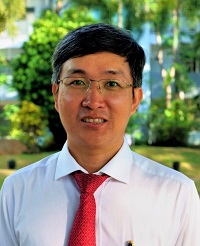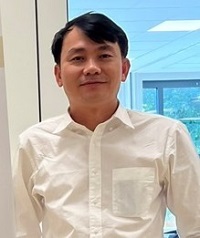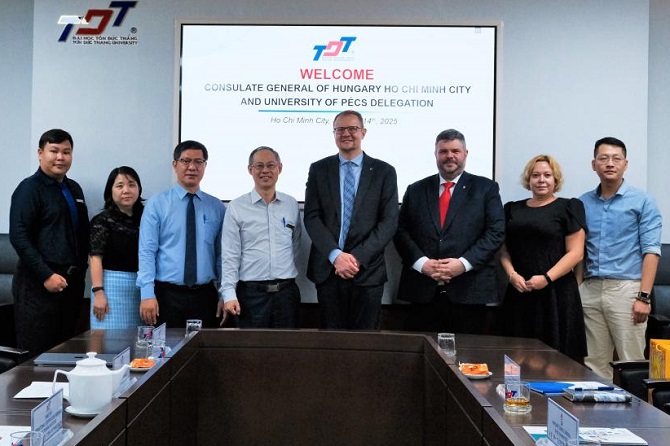Along with the rapid evolution of computer science and information technology, smart computing methodologies based on artificial neural networks and machine learning algorithms, have been increasingly embraced in various engineering disciplines including civil engineering. Currently, several problems in civil engineering cannot achieve optimal solutions by virtue of traditional methods, e.g., analytical methods, experimental methods, and numerical methods (finite element method, finite discrete element methods, etc.). These typical problems are: (i) estimating the ultimate axial load capacity of pile foundations, (ii) building holistic solutions for the stability analysis of geotechnical problems, e.g. tunneling construction, slopes, retaining wall structures, and shallow foundation; (iii) evaluating the residual strength of aging reinforced concrete structures considering the corrosion of reinforcement, (iv) estimating the impact of wave height on coastal structures; (v) developing a thorough optimization framework for sustainable designs of reinforced concrete structures; (vi) applying text analysis techniques for risk assessments in construction management. These smart computing approaches are promising alternatives to current engineering problems which can deliver optimal solutions for many civil engineering practices in Vietnam.
- Objectives
-
- Development of AI, machine learning, and high-performance computing models for optimizing materials, structural systems, and construction operations.
- Application of Big Data and numerical simulations to practical problems in civil engineering and coastal engineering.
- Graduate training (Master’s and Ph.D. levels) with specialization in AI for construction, contributing to the advancement of high-quality human resources.
- Technology transfer and enterprise collaboration to deploy intelligent solutions that enhance construction efficiency and sustainability.
- Research topics
-
- Application of AI to optimize construction materials and design intelligent structural systems.
- Utilization of high-performance computing (HPC) and Big Data for advanced simulations addressing various challenges in civil engineering.
- Development of solutions for climate change adaptation and enhancement of infrastructure sustainability.
- Members
-

Dr. Nguyen Tan Positions: Group Leader
Research achievements:
- Currently serving as Principal Investigator of an applied research project funded by the NAFOSTED Foundation.
- Successfully completed one institutional-level research project.
- Published two international book chapters indexed in Scopus, under the Lecture Notes in Civil Engineering book series by Springer.
- First author/corresponding author/contributor of at least 33 peer-reviewed publications indexed in the Web of Science (WoS).
- Holds an H-index of 10 (based on WoS database).
- Successfully supervised two Master's students.
- Registered one patent with the Intellectual Property Office of Vietnam.
- Experienced in collaborative R&D activities with both domestic and international organizations.

Assoc. Prof. Tran Minh Tung Positions: Key Member
Research achievements:
- Principal Investigator of 03 research projects at national, provincial, and institutional levels.
- Although not yet an author/co-author of a monograph book chapter, Assoc. Prof. Tung has served as an editorial board member for 03 conference proceedings indexed in ISI/Scopus, which is proposed as equivalent to the required criterion.
- Holds a personal H-index of 21, according to the Web of Science database.
- First author/corresponding author/contributor of at least 19 peer-reviewed publications in Web of Science or Scopus.
- Successfully supervised at least 04 Master's students and 02 PhD candidates.
- Has experience in collaborative research and development activities with both domestic and international organizations: Key member of one ministerial-level project, Scientific secretary of another ministerial-level project, Participant in two international research projects.

Dr. Phan To Anh Vu Positions: Key Member
Research achievements:
- Principal Investigator of 02 institutional-level research projects.
- Author or co-author of one monograph book chapter.
- Holds a personal H-index of 8, according to the Web of Science database.
- First author/corresponding author/contributor of at least 20 peer-reviewed publications in Web of Science or Scopus.
- Successfully supervised at least 04 Master’s students and 01 PhD candidate.
- Experienced in scientific and technological collaboration with both domestic and international organizations.

Dr. Pham Anh Tuan Chức vụ: Thành viên chủ chốt
Positions: Key Member
Research achievements:
- H-index: 15 (based on Web of Science); 29+ publications indexed in ISI/Scopus
- Editorial Board Member of Geosynthetics International (WoS, Q1)
- Associate Editor of Geotechnical and Geological Engineering (WoS, Q2) and Reviewer for more than 25 international journals
- Successfully supervised 2 Master's students and 3 undergraduate exchange research teams and currently co-supervising 1 PhD student in France
- Recognized in the World’s Top 2% Scientists 2024 by Stanford University / Elsevier
- Bronze Medal – International Mechanics Olympiad, KOVA Prize, Loa Thanh Award, Honda Yes Award, and 50+ other national/international awards for research excellence
- Research specialization: Computational geotechnics and AI-based modeling
- Strong emphasis on bridging academic research with international publication standards

Dr. Tran Quang Khiem Positions: Member
Research achievements:
- H-index: 7 (based on Web of Science); more than 10 ISI-indexed publications as first/corresponding author.
- Key researcher in a NAFOSTED-funded project on AI applications in foundation engineering.
- Team member of a national-level KC program project on flood warning systems for Ho Chi Minh City.
- Research focus: Application of AI and optimization models in structural engineering and geotechnics.
- Publications
-
- Nguyen-Minh, T., Bui, T. N., Shiau, J., Nguyen, T., & Nguyen-Thoi, T. (2025). A novel closed-form solution for circular tunnels in cohesive-frictional soils using isogeometric analysis, upper bound limit analysis, and soft computing. Computers and Geotechnics, 180, 107104. (ISI, Q1)
- Nguyen, M. T., Bui, T. N., Shiau, J., Nguyen, T., & Nguyen, T. T. (2025). Stability of rectangular tunnels in cohesive-frictional soil under surcharge loading using isogeometric analysis and Bayesian neural networks. Advances in Engineering Software, 201, 103861. (ISI, Q1)
- Shiau, J., Nguyen, T., Pham-Tran-Hung, T., & Sugawara, J. (2025). Probabilistic assessment of passive earth pressures considering spatial variability of soil parameters and design factors. Scientific Reports, 15(1), 4752. (ISI, Q1)
- Duong, N. T., Luu, L. X., Tran, L. H., & Tran, K. Q. (2025). Application of Weibull Distribution and Stable Energy Concept for Numerical Solutions of Random Wave Heights. Dynamics of Atmospheres and Oceans, 101544.
- Nguyen, T. H., Vuong, H. T., Shiau, J., Nguyen-Thoi, T., Nguyen, D. H., & Nguyen, T. (2024). Optimizing flexural strength of RC beams with recycled aggregates and CFRP using machine learning models. Scientific Reports, 14(1), 28621. (ISI, Q1)
- Nguyen-Minh, T., Bui-Ngoc, T., Shiau, J., Nguyen, T., & Nguyen-Thoi, T. (2024). Hybrid deep learning and isogeometric analysis for bearing capacity assessment of sand over clay. Journal of Rock Mechanics and Geotechnical Engineering. (ISI, Q1)
- Nguyen-Minh, T., Bui-Ngoc, T., Shiau, J., Nguyen, T., & Nguyen-Thoi, T. (2024). Synergistic integration of isogeometric analysis and data-driven modeling for enhanced strip footing design on two-layered clays: Advancing geotechnical engineering practices. Engineering Analysis with Boundary Elements, 167, 105880. (ISI, Q1)
- Bui-Ngoc, T., Nguyen, T., Nguyen-Quang, M. T., & Shiau, J. (2024). Predicting load–displacement of driven PHC pipe piles using stacking ensemble with Pareto optimization. Engineering Structures, 316, 118574. (ISI, Q1)
- Shiau, J., Nguyen, T., & Bui-Ngoc, T. (2024). Passive earth pressure on vertical rigid walls with negative wall friction coupling statically admissible stress field and soft computing. Scientific Reports, 14(1), 21322. (ISI, Q1)
- Nguyen, T., Ly, D. K., Shiau, J., & Nguyen-Dinh, P. (2024). Optimizing load-displacement prediction for bored piles with the 3mSOS algorithm and neural networks. Ocean Engineering, 304, 117758.
- Van Tran, M., Ly, D. K., Nguyen, T., & Tran, N. (2024). Robust prediction of workability properties for 3D printing with steel slag aggregate using bayesian regularization and evolution algorithm. Construction and Building Materials, 431, 136470. (ISI, Q1)
- Shiau, J., Nguyen, T., Sams, M., & Bhattacharya, P. (2024). Innovative numerical modeling for predicting soil relaxation in the design of twin circular culverts. Scientific Reports, 14(1), 7689. (ISI, Q1)
- Tran, K. Q., Duong, N. T., Luu, L. X., & Tran, L. H. (2024). Unconfined compressive strength of geopolymers based soil: model development using gene expression programming and a comparison with other computer-based approaches. Mechanics of Advanced Materials and Structures, 1-11. (ISI, Q1)
- Shiau, J., Nguyen, T., & Ly-Khuong, D. (2024). Unraveling seismic uplift behavior of plate anchors in frictional-cohesive soils: a comprehensive analysis through stability factors and machine learning. Ocean Engineering, 297, 116987. (ISI, Q1)
- Pham, T. M., Hyde, H., Kaung, M. K., Zhuge, Y., Tran, D. T., Vlietstra, D., & Tran, T. M. (2024). Comparative impact behaviours of ultra high performance concrete columns reinforced with polypropylene vs steel fibres. Defence Technology, 40, 138-153.
- Pham, T. M., Fung, K. F., Kyaw, R., Bi, K., & Tran, T. M. (2024, November). Influence of preloading on dynamic compressive behaviour and properties of fibre reinforced concrete. In Structures (Vol. 69, p. 107416). Elsevier.
- Nguyen, T., & Shiau, J. (2024). Passive earth pressure in sand on inclined walls with negative wall friction based on a statically admissible stress field. Acta Geotechnica, 19(8), 5685-5709. (ISI, Q1)
- Nguyen, T., Shiau, J., & Ly, D. K. (2024). Enhanced earth pressure determination with negative wall-soil friction using soft computing. Computers and Geotechnics, 167, 106086. (ISI, Q1)
- Nguyen-Minh, T., Bui-Ngoc, T., Shiau, J., Nguyen, T., & Nguyen-Thoi, T. (2024). Undrained sinkhole stability of circular cavity: a comprehensive approach based on isogeometric analysis coupled with machine learning. Acta Geotechnica, 19(8), 5561-5583. (ISI, Q1)
- Nguyen, T., & Shiau, J. (2023). Revisiting active and Passive Earth pressure problems using Three Stability factors. Computers and Geotechnics, 163, 105759. (ISI, Q1)
- Nguyen, T., Ly, D. K., Huynh, T. Q., & Nguyen, T. T. (2023). Soft computing for determining base resistance of super-long piles in soft soil: A coupled SPBO-XGBoost approach. Computers and Geotechnics, 162, 105707. (ISI, Q1)
- Nguyen-Minh, T., Bui-Ngoc, T., Shiau, J., Nguyen, T., & Nguyen-Thoi, T. (2023). Coupling isogeometric analysis with deep learning for stability evaluation of rectangular tunnels. Tunnelling and Underground Space Technology, 140, 105330. (ISI, Q1)
- Nguyen, T. H., Nguyen, T., Truong, T. T., Doan, D. T. V., & Tran, D. H. (2023, May). Corrosion effect on bond behavior between rebar and concrete using Bayesian regularized feed-forward neural network. In Structures (Vol. 51, pp. 1525-1538). Elsevier. (ISI, Q1)
- Pham, T. A., & Sutman, M., (2023). A simplified method for bearing capacity analysis of energy piles integrating temperature-dependent model of soil-water characteristic curve. Journal of Geotechnical and Geoenvironmental Engineering, 23(4), 04023017. https://doi.org/10.1061/IGGEFK.GTENG-11095. (ISI, Q1)
- Duong, N. T., Tran, K. Q., Luu, L. X., & Tran, L. H. (2023). Prediction of breaking wave height by using artificial neural network-based approach. Ocean Modelling, 182, 102177. (ISI, Q1)
- Tran, H. B., & Phan, V. T. A. (2024). Potential usage of fly ash and nano silica in high-strength concrete: Laboratory experiment and application in rigid pavement. Case Studies in Construction Materials, 20, e02856.



